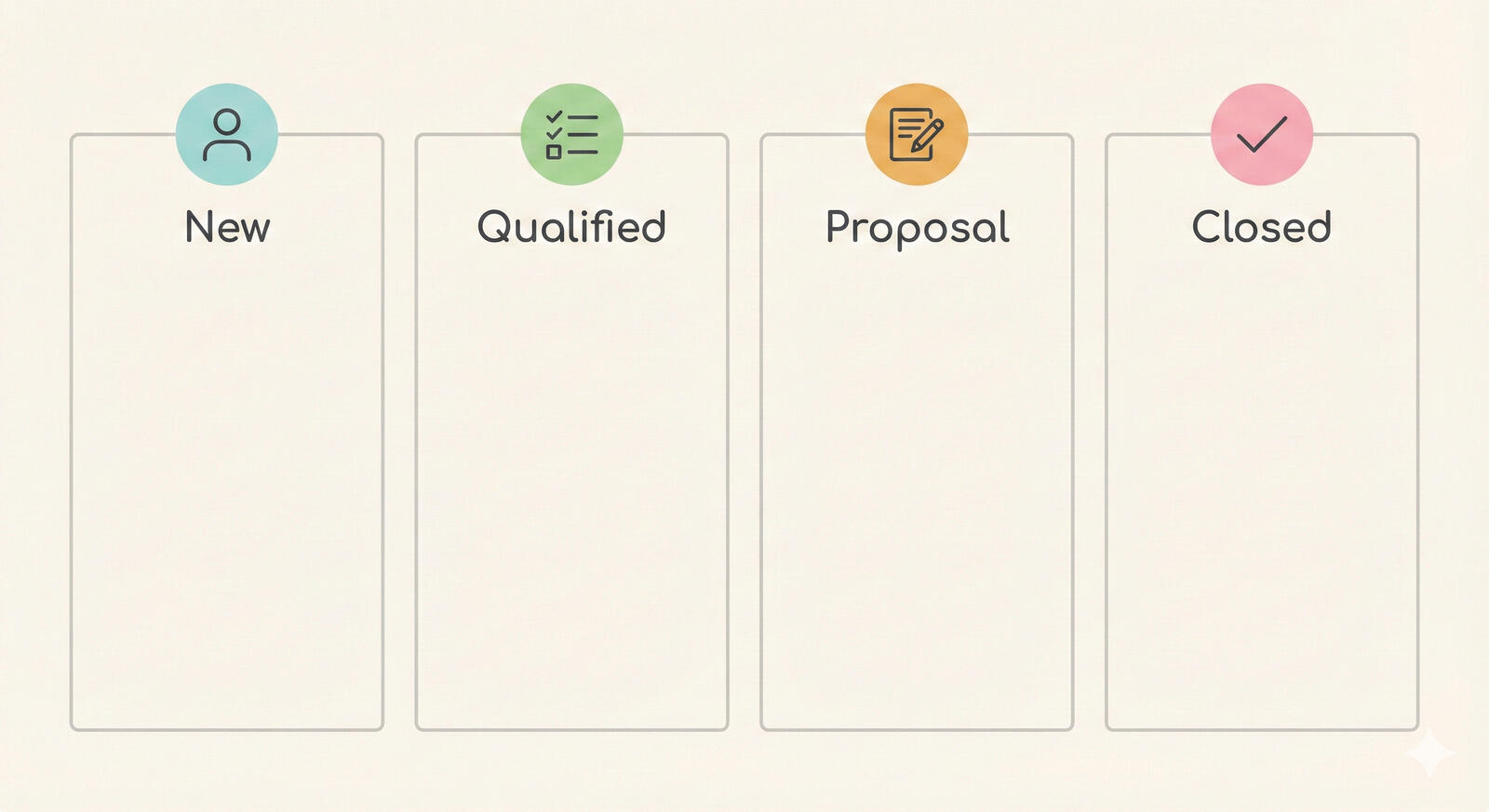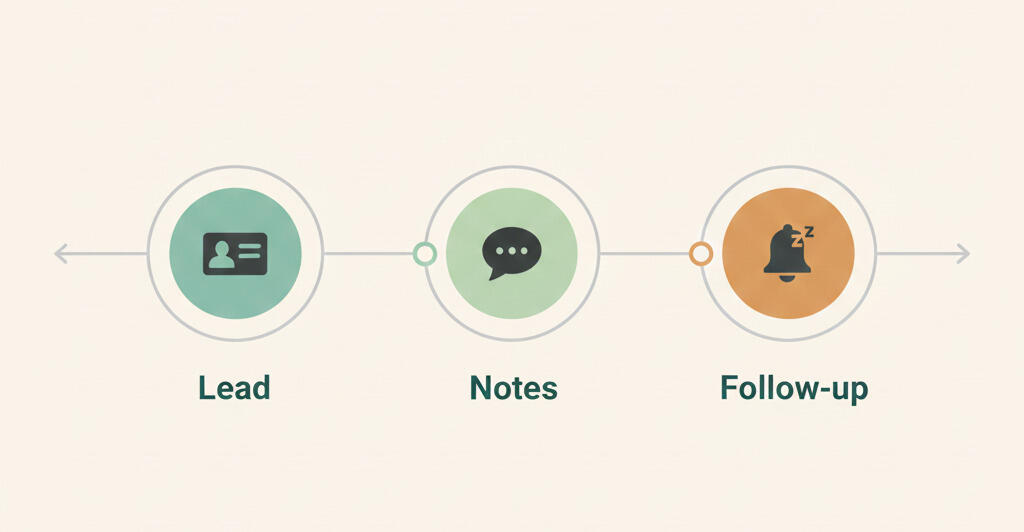An easy way to set and track long-term goals
Where do you see yourself five years from now? What do you plan to do post-retirement? What are your long-term goals? You’ve probably heard such questions at least once over the last few years — during job interviews, family gatherings, or business meetings. They can get us thinking about our life’s goals.

Answers to questions on long-term goals speak volumes about the person. It can give us an idea about the individual’s passion, values, dreams, and more. At the workplace, defining and then working toward accomplishing long-term goals and objectives shows how organized, focused, and dedicated the person is.
What are long-term goals?
Long-term goals are those that you would like to achieve in the future. They could be personal, financial, professional, or career-oriented goals. Unlike short-term goals that you can accomplish in a few days or weeks, it may take years or even a decade to achieve a long-term goal.
A child may have a long-term goal of successfully graduating from college. A marketing professional, designer, accountant, or entrepreneur may have a long-term goal of becoming the best in business or becoming the most sought-after professionals in their respective fields. A sales professional may have a goal of improving sales by 75% in the next two years. A manager can have a long-term goal of expanding the current team size by 100% and improving efficiency, transparency, and collaboration in the project.
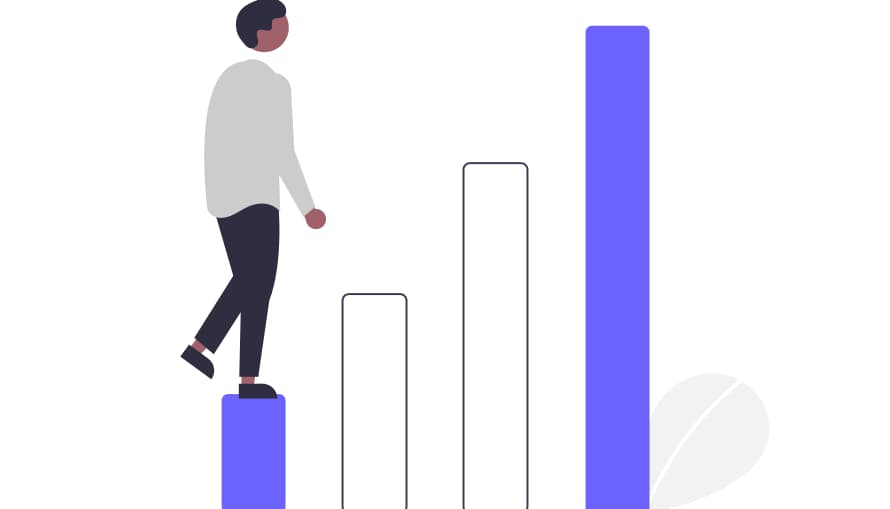
Long-term goals vs short-term goals
Long-term goals can be more challenging to follow through compared to short-term goals. They demand greater flexibility, effort, focus, and commitment.
- Focus: Since short-term goals can be completed within a short period, staying focused is easy. Long-term goals will demand greater focus over an extended period.
- Shocks and surprises: Since the future is unpredictable, you may encounter surprises, shocks, or obstacles, changing your path toward achieving long-term goals. This is unlikely in the case of short-term goals that are set and completed quickly.
- Motivation: You’re not going to see immediate results with long-term goals. Hence, unless you divide your long-term goal into multiple short-term goals, it’s going to be a little difficult to stay motivated. Short-term goals, on the other hand, offer quick success.
5 points to remember while defining long-term goals
Since long-term goals can take really long before you celebrate their success, keeping these pointers in mind can help you stay focused and on track.
1. Set feasible long-term goals
You know yourself the best. Set ambitious, yet practical long-term goals so you’re able to achieve them. Consider challenges that you may encounter on the way toward success and give yourself a reasonable timeline to accomplish the goal.
2. Define SMART goals
When you set SMART goals — specific, measurable, achievable, relevant, and time-bound goals — your approach and ideas are bound to be clearer. Right in the beginning, you’ll have clarity on the outcomes you want to realize, the feasibility of achieving them, how they contribute toward your personal or professional growth, and when you’ll complete them.
3. Build your roadmap
Determine the many steps you’ll need to take to accomplish your goal. In other words, divide your long-term goal into multiple short-term goals. Set a timeline for each short-term goal. Additionally, you may divide the journey into three or four phases. The roadmap — with the various short-term goals and phases or milestones — will give you a sense of direction. It will help you stay organized and focused.

4. Celebrate milestones
Milestones mark important points in the journey or project schedule. They indicate the completion of major work phases. As the journey is long, how about celebrating milestones along the way? It will motivate you to move further toward the next milestone and your goal. In the case of long-term project goals at the workplace, milestone celebrations can help maintain a positive environment and inspire employees to do better.
5. Stay flexible
Though you have clarity on your long-term goal, expectations could change as you progress. Circumstances may change or you may have a few other new priorities. Hence, it’s important to remain flexible and be prepared for changes.
How to set and monitor long-term goals easily
Breeze helps marketing professionals, designers, accountants, managers, and the likes set and manage long-term goals easily. The tool helps teams manage their long-term project goals efficiently.
Add to-do tasks and lists
Now that you know the best way forward is to break down your long-term goal into multiple short-term tasks, Breeze can help. For long-term team projects, managers can allocate different tasks to relevant team members. Adding new tasks along the way is quite simple too.

Set deadlines
Once you’ve defined your short-term goals that will be part of your long-term project, add due dates to each of the short-term tasks. You can set timelines on Breeze and the schedule will automatically show up on your calendar.
Track long-term project status
Multiple short-term goals that contribute to the success of the overall long-term project may overlap. Breeze makes task and project tracking extremely easy. You can view all your goals, their timelines, and project status — on track, on hold, done, ready, off track, or blocked — all in one screen.
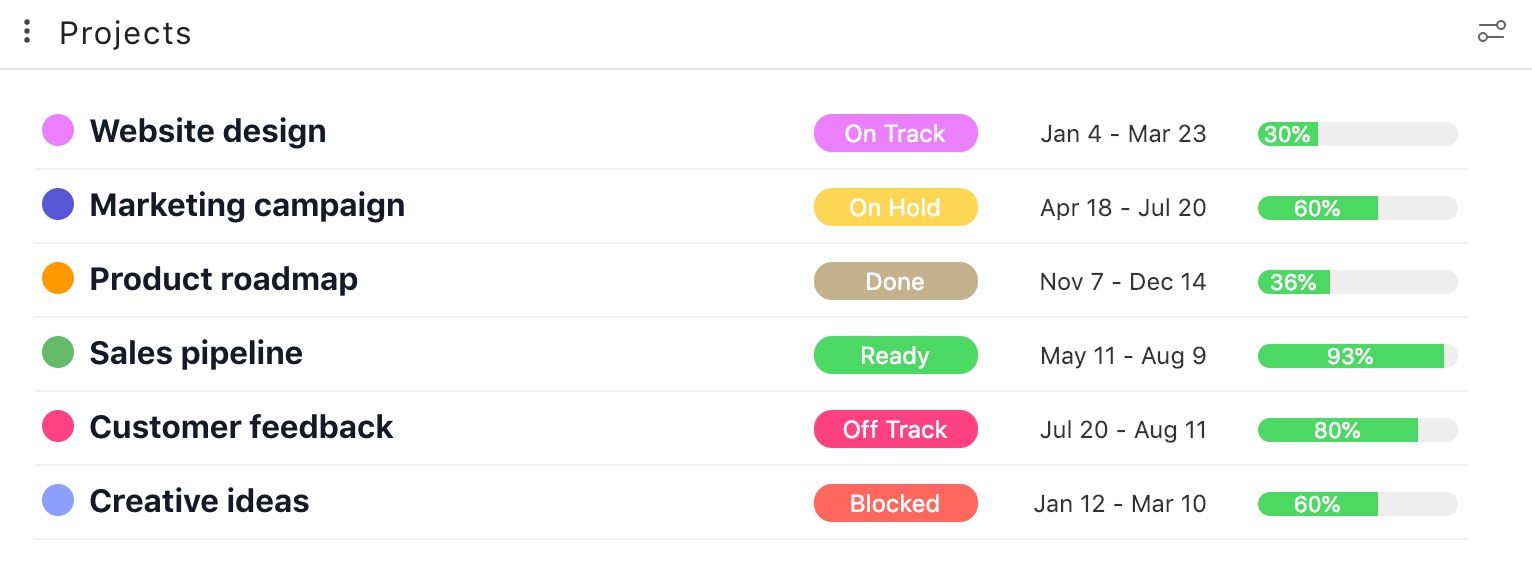
Save files on the cloud
Managing documents, images, and files across disparate systems and locations can become challenging while working on long-term projects. How about a single location to access the latest versions of files? Breeze offers unlimited cloud-based storage so you can easily attach files to relevant tasks and comments. All team members working on a project can upload and access files anytime and from anywhere.
Add and track project notes
Drafting notes on small bits of paper, on MS Office files, or your e-mail app may be easy. But, finding the notes or any other crucial project information from paper bits or applications can become a challenge in the case of long-term projects. Breeze allows you to draft and save relevant project ideas, notes, guidelines, and more conveniently within each project.
Collaborate virtually
Employees working on the same project can collaborate on Breeze. They can initiate discussions, add comments, react with emoticons, attach files, etc. When you tag a team member in a conversation, Breeze automatically sends a notification to the user with all relevant details. The user can even reply to the e-mail notification without logging in to Breeze — the tool will automatically add the user’s thoughts or inputs in the appropriate task.
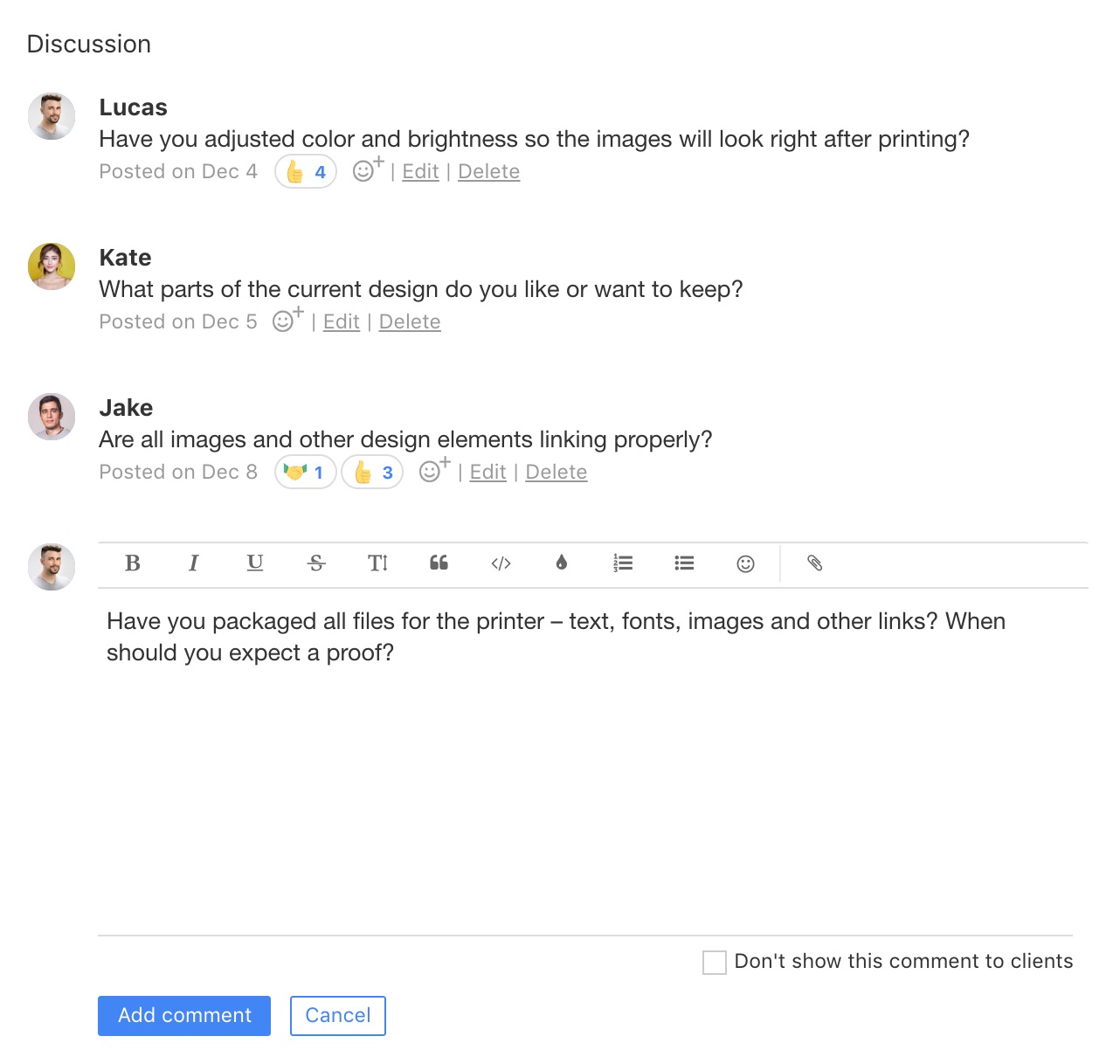
Keep clients in the loop
With Breeze, you can invite as many stakeholders and client users as you want for free. This way, they’ll be able to directly check project progress. You can also get their inputs directly on the platform. However, there may be tasks and comments that you’d want only your internal team to access. You can simply hide such tasks and comments and they’ll stay private.
Track workload
Breeze has a calendar and resource management feature to facilitate the smooth running of long-term projects. Managers can view project timelines as well as the entire team’s workload on the tool’s calendar. If a team member is overburdened with work, the manager can reallocate a part of that task to another employee who has spare bandwidth.
Stay on track at all times
It can be easy to get distracted while working on long-term projects. Breeze’s work dashboard helps you stay focused. It offers a complete list of all your tasks across projects and their status. You’ll know what’s overdue, what tasks are due in a week, and what tasks need to be accomplished in the near future so you can always keep on top of your tasks.

Access insightful dashboards and reports
If you need a visual representation of your short-term tasks and long-term projects, Breeze offers project dashboards with all the appropriate information a project manager will need. Insightful reports help managers gauge performance and understand the project progress better:
- What is the team focusing on the most?
- Which team member contributed toward the successful completion of which milestone?
- How long did individual tasks take?
Certain reports that require client or stakeholder attention can be shared with them even if they haven’t created a Breeze account.
Integrate third-party tools
Are you looking for a simple project and goal management tool but don’t want to give up on your existing tools? You can easily integrate your current favorite tools with Breeze project management:
- Team chat – Slack and Flowdock
- Time tracking – Toggl, Harvest, Timecamp, Clockify, Hubstaff, Timeneye, and Track.ly by 500apps
- Productivity, feedback, and planning – Evernote, Ganttile, iDoneThis, Gravity Forms, Doorbell, Zapier, and Integromat
- Accounting and invoicing – FreshBooks and Quickbooks
- Customer service and support – Zendesk Support and Groove
- Cloud file storage – Google Drive, Dropbox, OneDrive, and Box
- Software development – GitHub, GitLab, Bitbucket, and Beanstalk
- Developer Tools – LambdaTest and GitBreeze
Switch to Breeze
Managing long-term projects can be complicated and time-consuming. Hence, if you’re looking for a project management tool that’s easy to use yet loaded with useful features, switch to Breeze. Breeze is intuitive.
Whether you’re a marketer, accountant, developer, designer, or project manager, Breeze can simplify long-term goal management for you. The tool helps you track long-term projects easily. Get started now.


